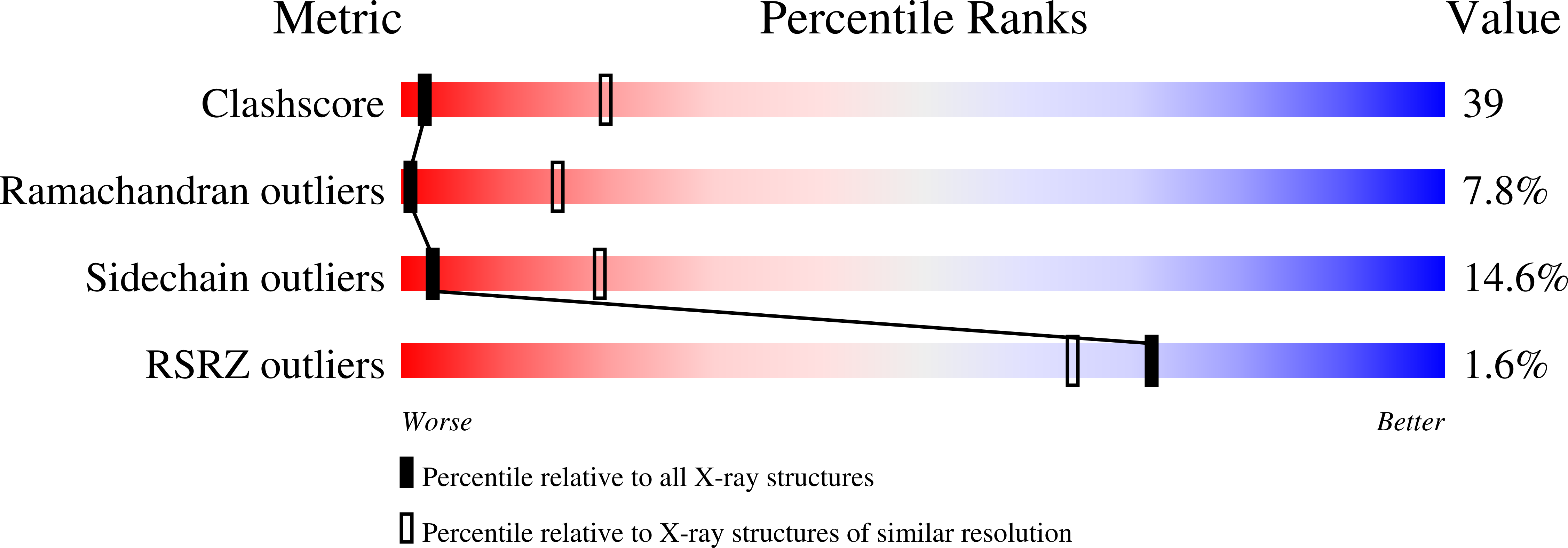Three Dimensional Structure of Physalis Movirus: Implications for the Viral Assembly
Krishna, S.S., Hiremath, C.N., Munshi, S.K., Prahadeeswaran, D., Sastri, M., Savithri, H.S., Murthy, M.R.N.(1999) J Mol Biol 289: 919
- PubMed: 10369772
- DOI: https://doi.org/10.1006/jmbi.1999.2787
- Primary Citation of Related Structures:
1QJZ - PubMed Abstract:
The structure of the T=3 single stranded RNA tymovirus, physalis mottle virus (PhMV), has been determined to 3.8 A resolution. PhMV crystals belong to the rhombohedral space group R 3, with one icosahedral particle in the unit cell leading to 20-fold non-crystallographic redundancy. Polyalanine coordinates of the related turnip yellow mosaic virus (TYMV) with which PhMV coat protein shares 32 % amino acid sequence identity were used for obtaining the initial phases. Extensive phase refinement by real space molecular replacement density averaging resulted in an electron density map that revealed density for most of the side-chains and for the 17 residues ordered in PhMV, but not seen in TYMV, at the N terminus of the A subunits. The core secondary and tertiary structures of the subunits have a topology consistent with the capsid proteins of other T=3 plant viruses. The N-terminal arms of the A subunits, which constitute 12 pentamers at the icosahedral 5-fold axes, have a conformation very different from the conformations observed in B and C subunits that constitute hexameric capsomers with near 6-fold symmetry at the icosahedral 3-fold axes. An analysis of the interfacial contacts between protein subunits indicates that the hexamers are held more strongly than pentamers and hexamer-hexamer contacts are more extensive than pentamer-hexamer contacts. These observations suggest a plausible mechanism for the formation of empty capsids, which might be initiated by a change in the conformation of the N-terminal arm of the A subunits. The structure also provides insights into immunological and mutagenesis results. Comparison of PhMV with the sobemovirus, sesbania mosaic virus reveals striking similarities in the overall tertiary fold of the coat protein although the capsid morphologies of these two viruses are very different.
Organizational Affiliation:
Molecular Biophysics Unit, Indian Institute of Science Bangalore, 560 012, India. mrn@mbu.iisc.ernet.in














